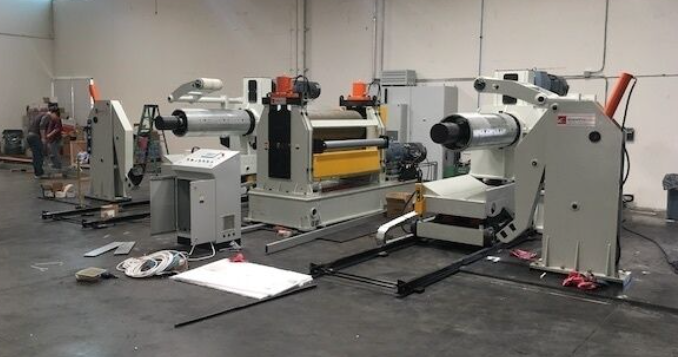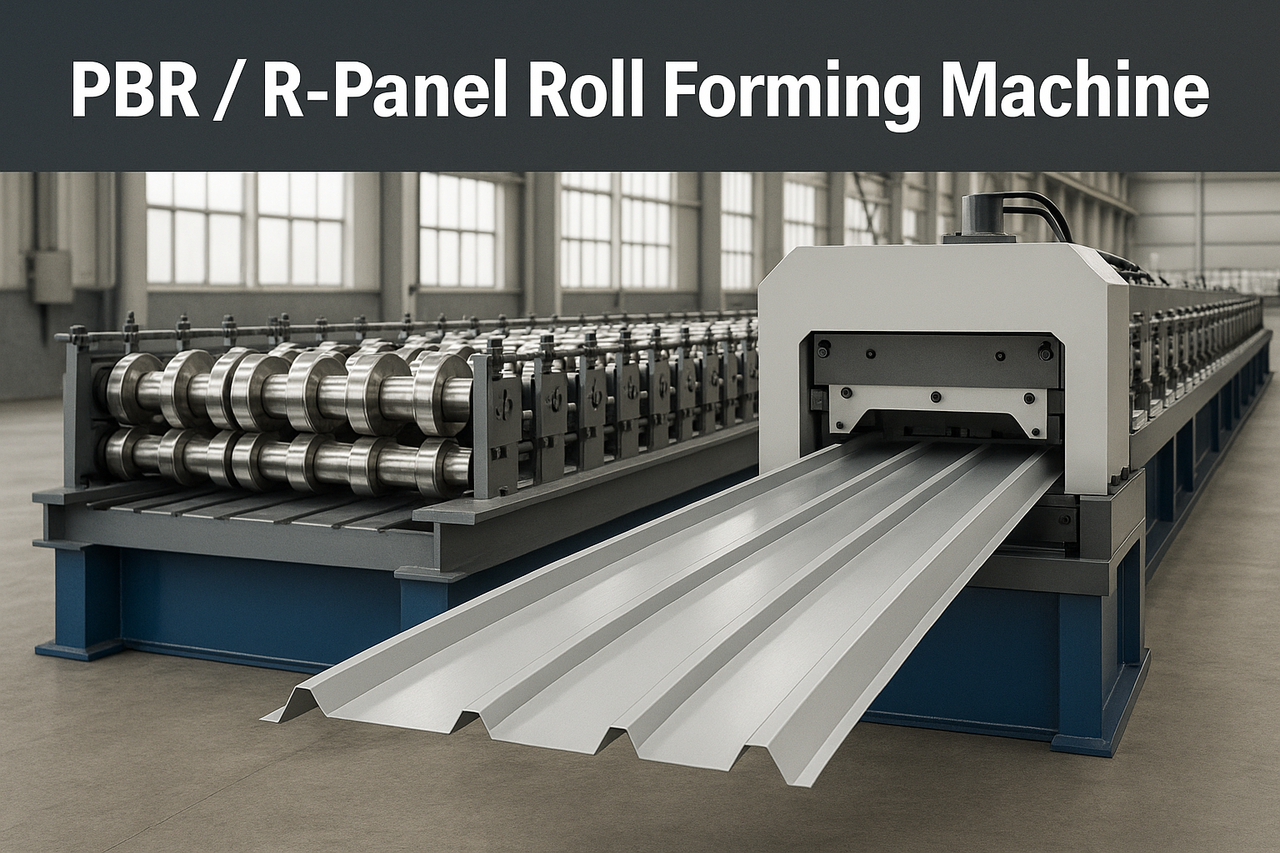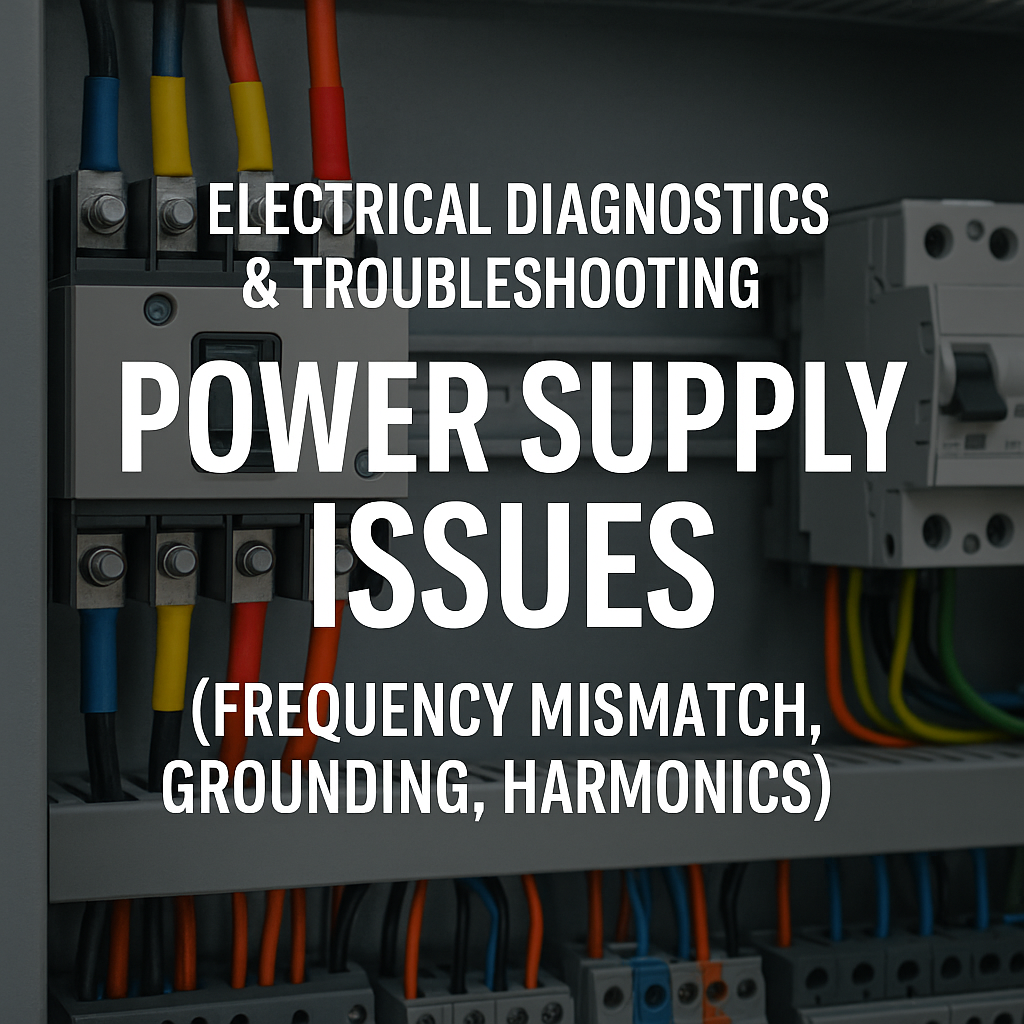
Posted on Wednesday, October 1, 2025
Running pre-painted coil through an embossing line can produce beautiful textured panels—but only if everything is set up correctly. One common problem that operators encounter is paint cracking during embossing. This issue not only affects the visual quality of the product but can also lead to increased scrap rates and customer complaints. In this post, we’ll explore the main causes of paint cracking and offer practical solutions to prevent it.
The first place to look when paint cracks is the coil itself:
Paint Thickness Too High: Coils with a thicker coating can struggle to flex during embossing. If the paint layer is too thick relative to the metal thickness or embossing depth, cracking is almost inevitable.
Incorrect Paint Formulation: Some paints are brittle by nature. For example, rigid polyurethane coatings may not handle the stretching involved in embossing. Using a flexible coating designed for forming processes is essential.
Curing Problems: Paint that hasn’t fully cured will crack under stress. Always confirm the coating supplier’s recommended cure temperature and duration.
Aging or Storage Issues: Old stock or coils stored in improper conditions can lose flexibility, making cracking more likely.
The steel itself plays a big role in paint performance:
High Tensile or Hard Temper Steel: Harder steels deform less easily, putting more strain on the paint during embossing.
Surface Defects: Small scratches, oil spots, or roller marks can concentrate stress and initiate cracks.
Coil Misalignment: If the coil enters the embossing line unevenly, localized stress can create paint fractures.
The way the embossing line is set up and operated significantly affects paint quality:
Excessive Roller Pressure: Too much force stretches the paint beyond its limit. Adjusting pressure carefully can prevent cracking.
Aggressive Embossing Depth: Deeper patterns increase the strain on both metal and paint. Start with shallow embossing and increase depth gradually.
Roller Geometry Mismatch: Rollers not designed for the paint thickness or pattern can create uneven strain. Check compatibility before running production.
Line Speed: Running the line too fast can increase stress on the paint during deformation, leading to cracks.
Temperature can make paint more or less flexible:
Ambient Temperature Fluctuations: Extremely cold or hot environments can alter paint flexibility.
Frictional Heating: Embossing rollers can generate local heat, potentially embrittling the paint and causing cracks.
Here are practical steps to prevent paint cracking on embossing lines:
Verify Paint Specification: Use coatings specifically formulated for forming and high-strain processes.
Adjust Embossing Depth and Pressure: Reduce roller force and pattern depth to minimize strain on the paint.
Check Roller Geometry: Ensure rollers are compatible with both the coil thickness and paint type.
Optimize Coil Tension: Too much or too little tension can cause paint to crack; tension should be even and consistent.
Confirm Paint Cure: Verify the coil has been properly cured before embossing.
Test Coil Batches: Variations between batches can affect paint flexibility—run small trials before full production.
Paint cracking on an embossing line is rarely caused by a single factor. It’s usually a combination of paint properties, coil material, mechanical settings, and thermal conditions. By understanding these variables and following preventive measures, operators can produce high-quality embossed panels with minimal defects.
For operators and production managers, regular checks on coil specification, roller setup, and embossing parameters are key to keeping your line running smoothly and avoiding costly scrap.

32/1000 Box Profile Roll Forming Machine – Complete Guide & Specifications
Posted on Sunday, November 16, 2025
High-performance 32/1000 box profile roll forming machine for roofing and cladding. Full specifications, profiles, applications, pricing

PBR / R-Panel Roll Forming Machine – Complete Guide & Specifications
Posted on Sunday, November 16, 2025
PBR / R-Panel roll forming machine for roofing and wall cladding. Full specs, profiles, applications, pricing, and global buying guide. Built to order.

Posted on Sunday, November 16, 2025
How to Diagnose and Fix the Hidden Electrical Problems That Cause Downtime
Copyright 2025 © Machine Matcher.